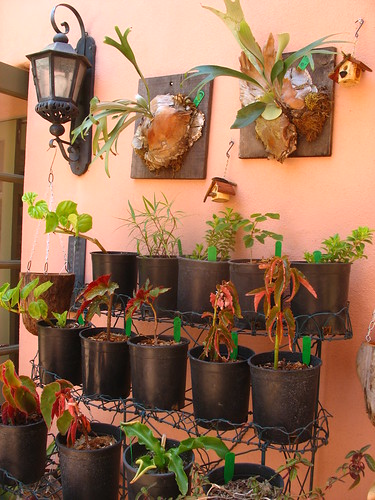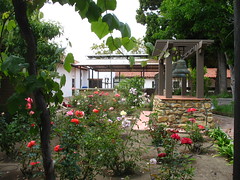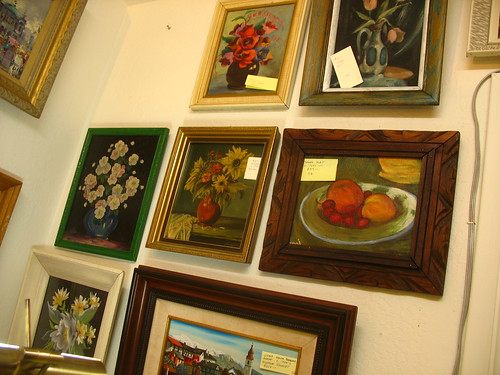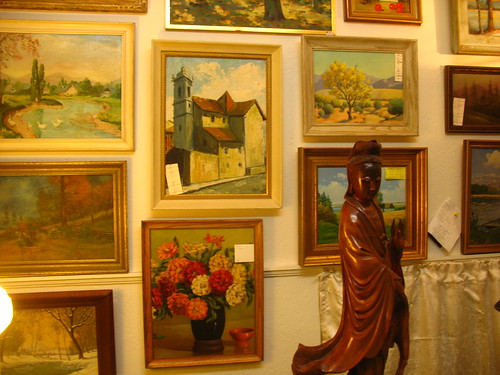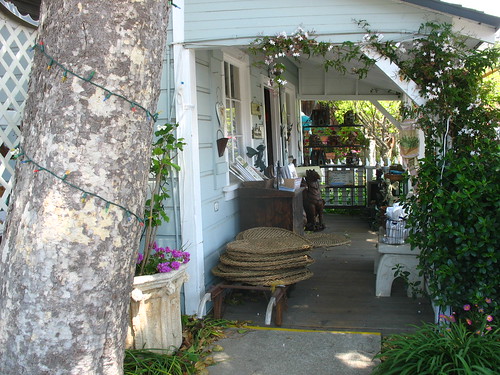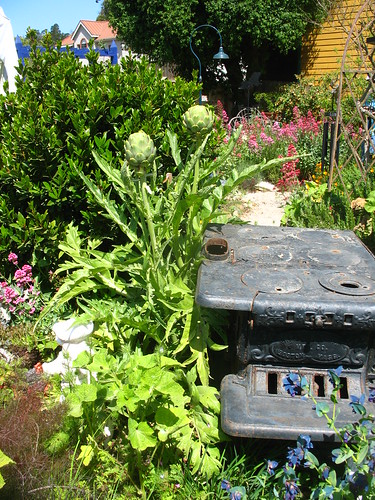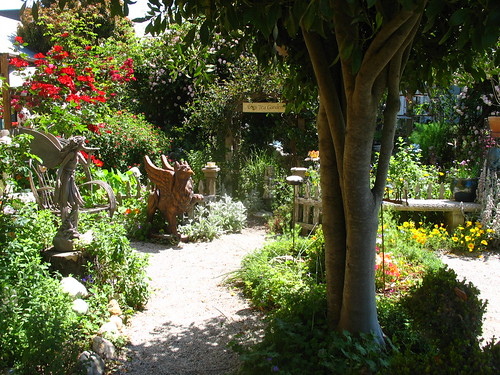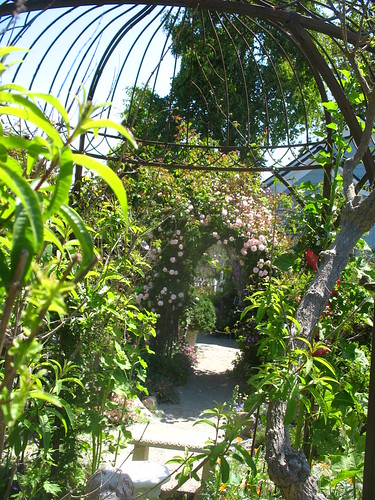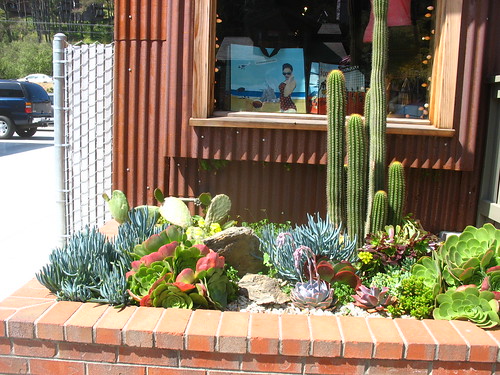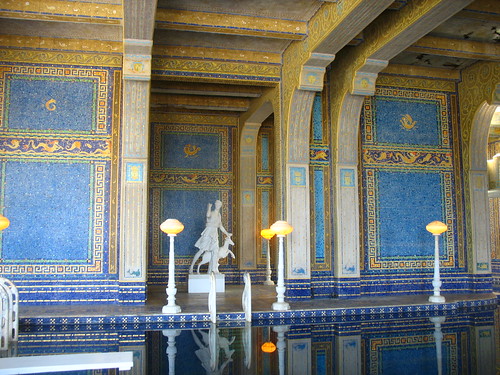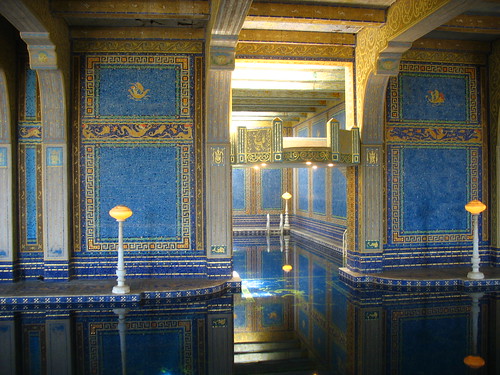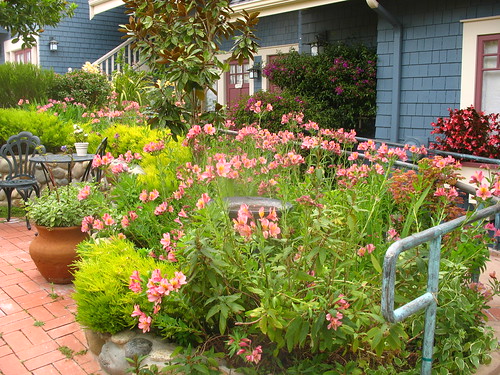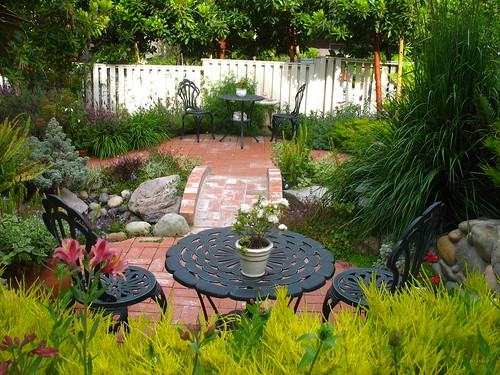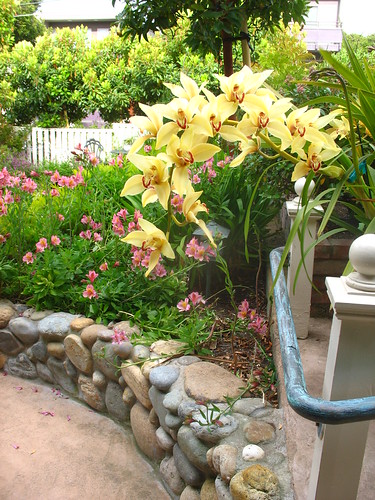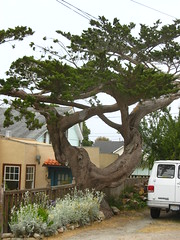First some notes:
If you plan to visit Lotusland, I encourage you to explore buying a Lotusland membership so you can take a self-guided tour and move at your own pace. Otherwise you'll be on the two-hour docent tour which moves much too fast. Without any time to linger or contemplate, you may end up feeling overwhelmed like I was. Maintaining the heightened state of alertness necessary to absorb the garden and its many choices and details while constantly on the move left me mentally and physically exhausted.
Financially, the membership is a no-brainer. A docent tour costs $35. For two people, that's $70. For only $5 more you get a membership that lets you bring a guest for a self-guided tour and gives you a 10% discount at the garden shop. I didn't get anything from the docent that I couldn't get from the Lotusland website. Since you have to call Lotusland to book a reservation, you might as well discuss membership options and the possibility of a self-guided tour with the person who takes your call.
The docent tours might be good for novices or if you just like to take guided tours. But don't expect to have any time to sit down and contemplate the garden or compose any photographs. And don't expect a docent to tell you much about the plants. He knew some of them, but I knew more. I've since decided it's rare to find a garden docent who knows anything much about botany or horticulture. (Note: San Francisco Botanical Garden docents are extensively trained and have a lot to say about plants. Free tours depart from the bookstore kiosk every day at 1:30 p.m. Ahem.)
If you've been mediterranean gardening in California or elsewhere for any length of time, you will recognize many of Lotusland's plants. What will blow your mind is the massing of those plants, and the effects of age. Judging by the size and maturity of many plants found throughout the garden, Lotusland is astonishingly well-preserved.
The garden's primary author, Madame Ganna Walska, a Polish-born opera singer and European socialite, came to California after living in Paris and New York. She bought the Santa Barbara estate that would later become Lotusland in 1941. A theatrical free-thinker with an interest in eastern mysticism, Walska became the very paradigm of Californian bohemia. Suffice it to say, her gardens capture and maintain a rare essence.
Lotusland is not static. The Lotusland Foundation recently opened a newly designed three-quarter acre cactus garden, the second new Lotusland garden added in the post-Walska era. (She died in 1984.)
Lotusland does not want you go arrive early. You're assigned a 30-minute window to arrive in. The parking lot gate opens and shuts promptly. Once in, you can meander around in a small area and visit the garden shop.
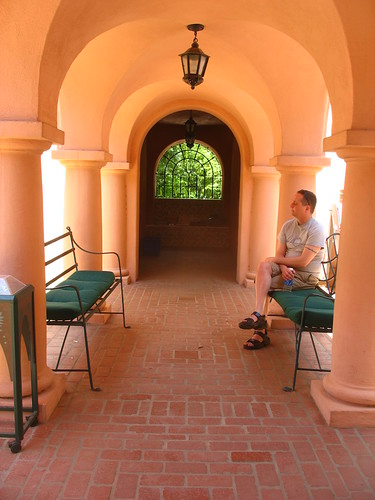
It was unfortunate for photography that we had bright sun during our visit. It's also unfortunate that my camera lens is quite contaminated by dust. I had to discard many pictures.
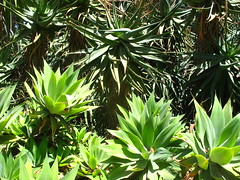
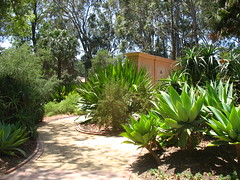
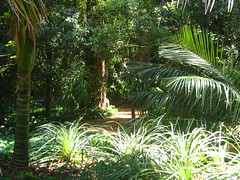
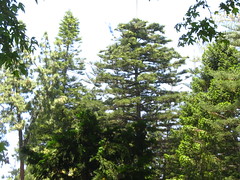
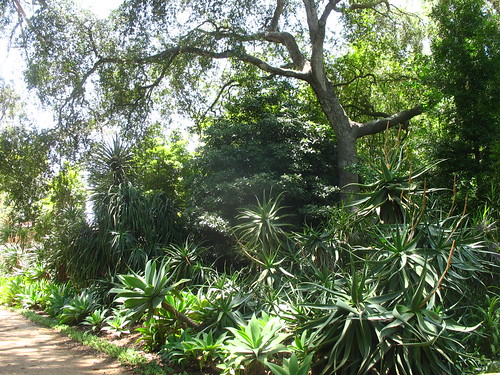
Lotusland has many pools and ponds, and they're all very different.
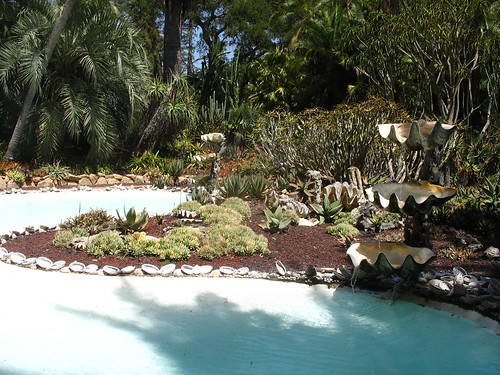
I wondered if this was all mine, would I spend whole days at different pools depending on my whim that morning?
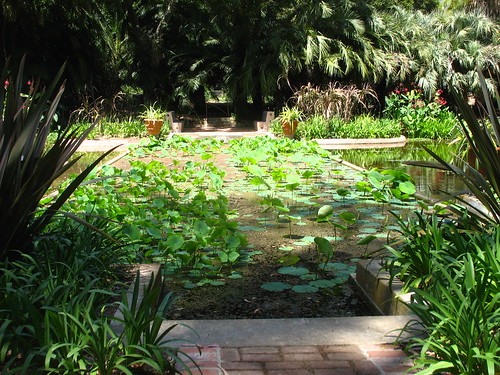
Plants repeated throughout Lotusland: aloe, agave, euphorbia, palm, tree fern.
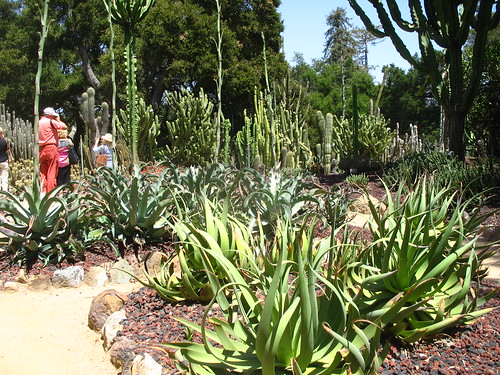
For a garden to be memorable, it must have some unusual specimens. Not necessarily unusual plants; unusual twists on familiar plants is satisfactory--perhaps even preferable. Like these tree fern twins.
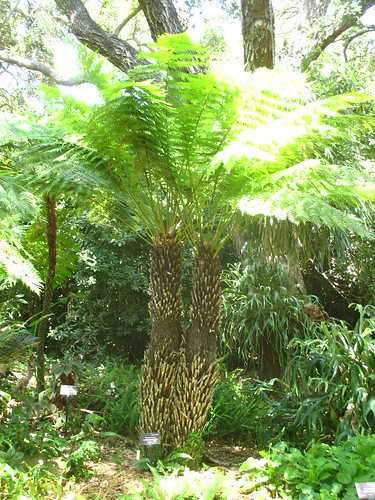
(Note: On the Lotusland scale, this hardly ranks as unusual. I'm calling it out as an example of something that's attainable in an ordinary garden that strives to be memorable.)
Unexpected topiaries work too.
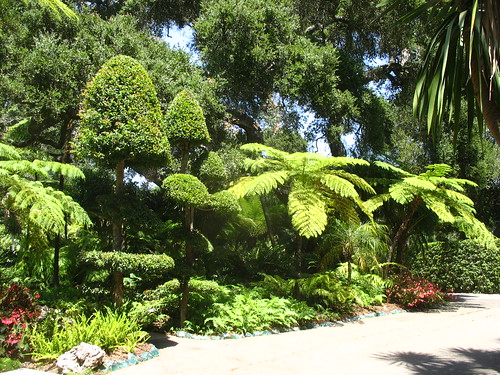
So do old things. Lotusland's olive trees predate Ganna Walska's arrival, but she knew to keep them.
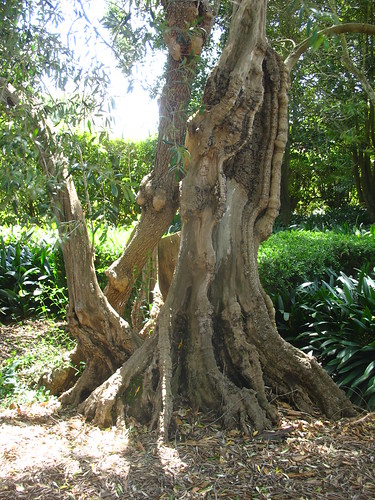
This estate's main house has memorable foundation plantings.
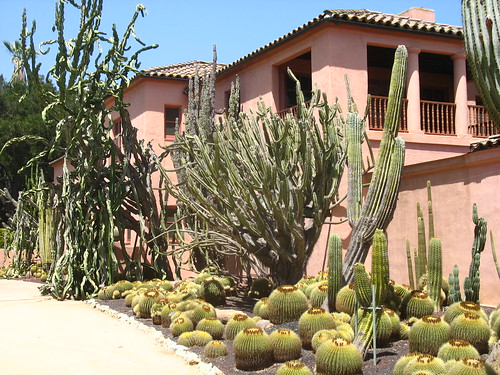
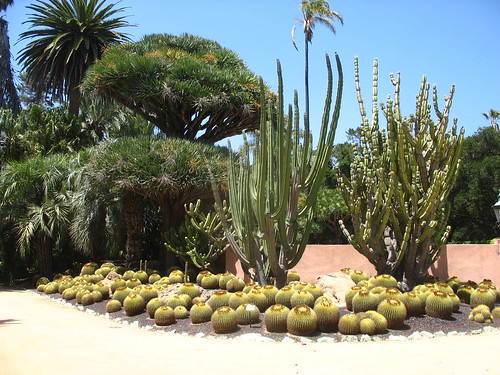
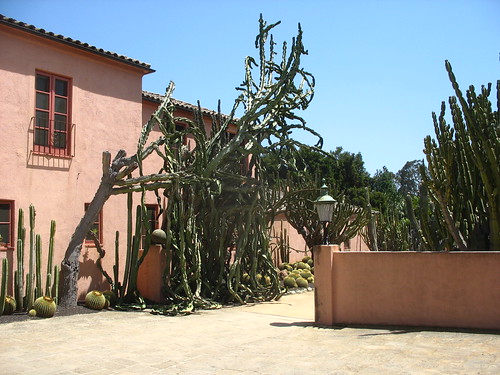
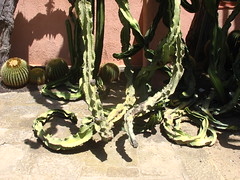

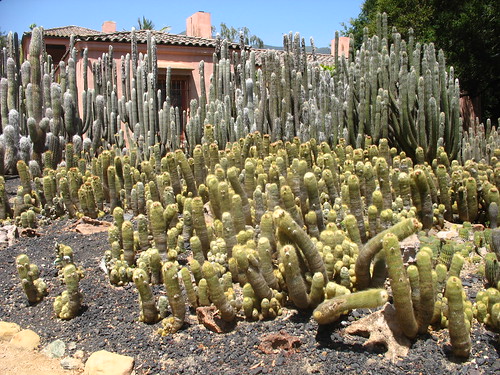
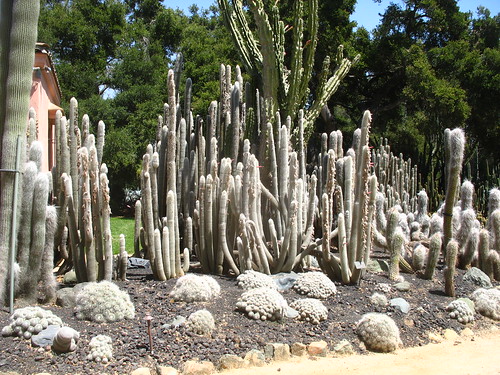
I like the rough glass chunks bordering the path; they have a big impact.
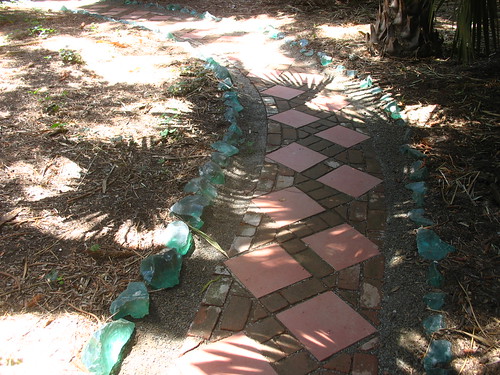
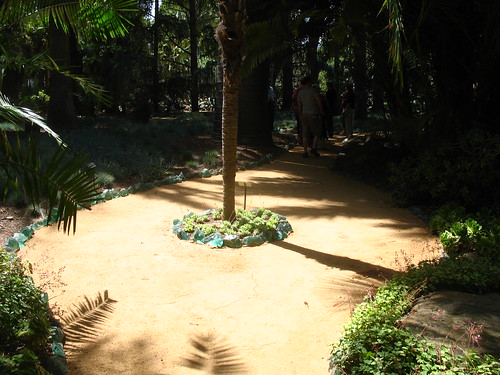
Having a path empowers you to enter alien landscapes.
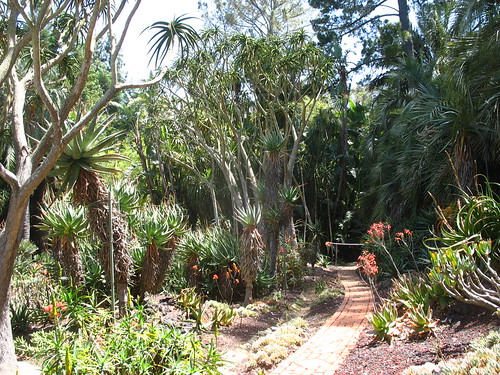
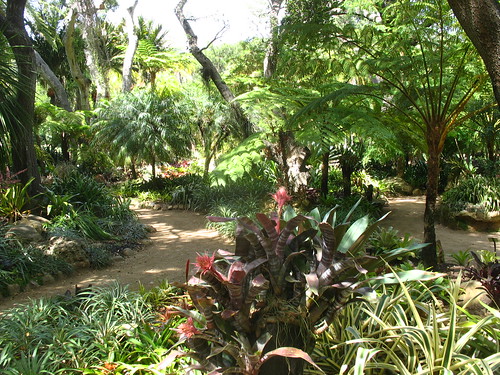
The drift of old ponytail palms (Nolina recurvata syn. Beaucarnia recurvata) will doubtless arouse the caudex fetishists.
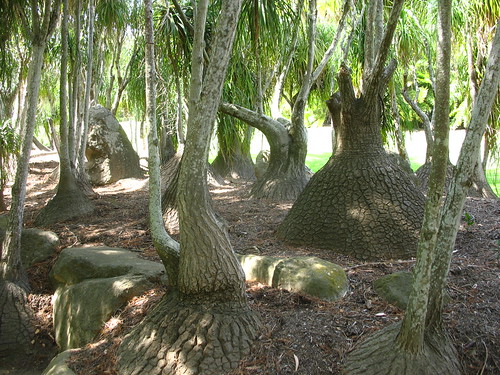
These agaves at the border of the great lawn amused me.

Walska designed the hanging basket chapeaux as anti-squirrel devices. Hang them in mass, and it's art.

The eight-pointed star, formed by the superimposition of two squares, is called an octagram.
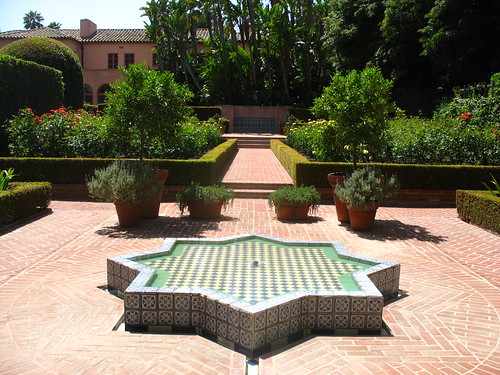
A pool like this in Mediterranean gardens harks back to Moorish influence on that region a thousand years ago. The octagram figures prominently in Islamic art, but it goes back much further than that. Half way between square and circle, the eight-pointed star has symbolic associations with wholeness, rebirth/regeneration, and life-death continuity.

And on that note, I'm going to take this symbolic opportunity to wrap up. (Because I want/need to eat dinner and play with my cats.)

Here are some flowers which have their own symbolic associations.
